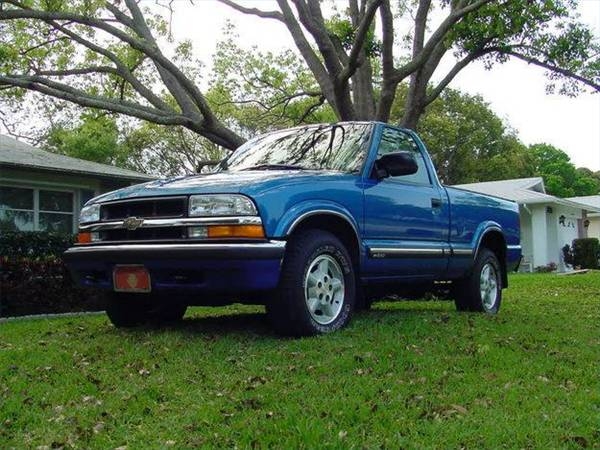
The Chevrolet S10 truck series was manufactured between 1982 and 2003, and included the S-15, GMC Jimmy and Blazer variants. Several engine choices were used: the 2.2 and 2.5 liter four-cylinder gasoline motors, the 2.8 and 4.3 liter V-6 engines, and an early diesel. Later models included on-board diagnostic computers. As the design was improved it became easier to maintain and troubleshoot with additional computer sensors, and a migration to electronic components instead of mechanical ones. Recalls and design flaws were reduced by the end of the vehicle's run, and repair of the S10 was simplified relative to comparable models.
The early years of the S10 model were focused on creating competition for Asian small trucks, and their economy and reliability. The S10 was offered with a heavy, iron cast 2.5 liter four-cylinder, a diesel motor and a 2.8 V-6 from the car divisions of General Motors. All were woefully underpowered, and the V-6 was notorious for being unreliable as a truck motor. Problems with the V-6 were heat-related head failure, computer-controlled carburetor issues and low torque. The 2.8 liter motor was replaced with the 4.3 liter version, which proved a more robust power-plant that was ideally suited for low-torque truck applications. The 4.3 evolved until it was the only engine choice available for the Jimmy and Blazer S10 variants. This V-6 had it's share of problems, including a design flaw that caused "loping" at idle. The 2.2 liter four cylinder was the replacement for the aged 2.5 "iron duke" motor, which was again borrowed from passenger car applications.
The S10 braking system was originally a front-disk, rear-drum set-up, which changed for the 1998 model year to four-wheel disk brakes. The addition of anti-lock braking systems in 1992 added to the complexity of the S10's brakes. Recalls for the newly developed ABS plagued the braking systems for the entire S10 line, and problems with the rear parking brake that was incorporated into the disk brake design were common. The hydraulic master cylinder design had not changed much during the production, and problems are rare. Additional issues with the S10 brakes are usually caused by the materials used for replacement parts, and ceramic pads are known to be better on these trucks than semi-metallic ones.
Problems with the construction of the interior developed with the introduction of the second generation of S10s in 1993. On the first generation models, interior dash and panel materials were of higher quality and secured with sturdier mounts; the second generation's loose, mostly plastic panels often squeaked and rattled, unlike previous model's different construction techniques. These interior changes were spurred by a need for lower production costs, and a new dashboard platform for General Motors products. The closure of the New Jersey GM production facility shortly after the second generation's introduction also forced most of the part manufacture to Canada, where the new interior parts were made.
The S10 uses an independent front suspension for four-wheel drive models, which was a trade-off for the small size of these trucks. IFS became common after the launch of the S10, especially in SUVs. The twin-axle, constant velocity joints are more delicate than their solid axle counterparts, and problems can occur with poorly maintained axle boots leaking fluid. This can dry out the joint, and wear down the internal bearings quickly.
While the available parts for the first generation trucks were common, the second generation design suffered from quality replacement part problems and a lack of support for Jimmy and Blazer aftermarket add-on parts. Issues with defective parts were with the fuel pumps, on-board diagnostic sensors and intake manifold gaskets, which were not manufactured to factory specifications. Using quality parts for replacement became a problem, especially after the model was discontinued in 2003 in favor of the all-new Colorado pickup truck.